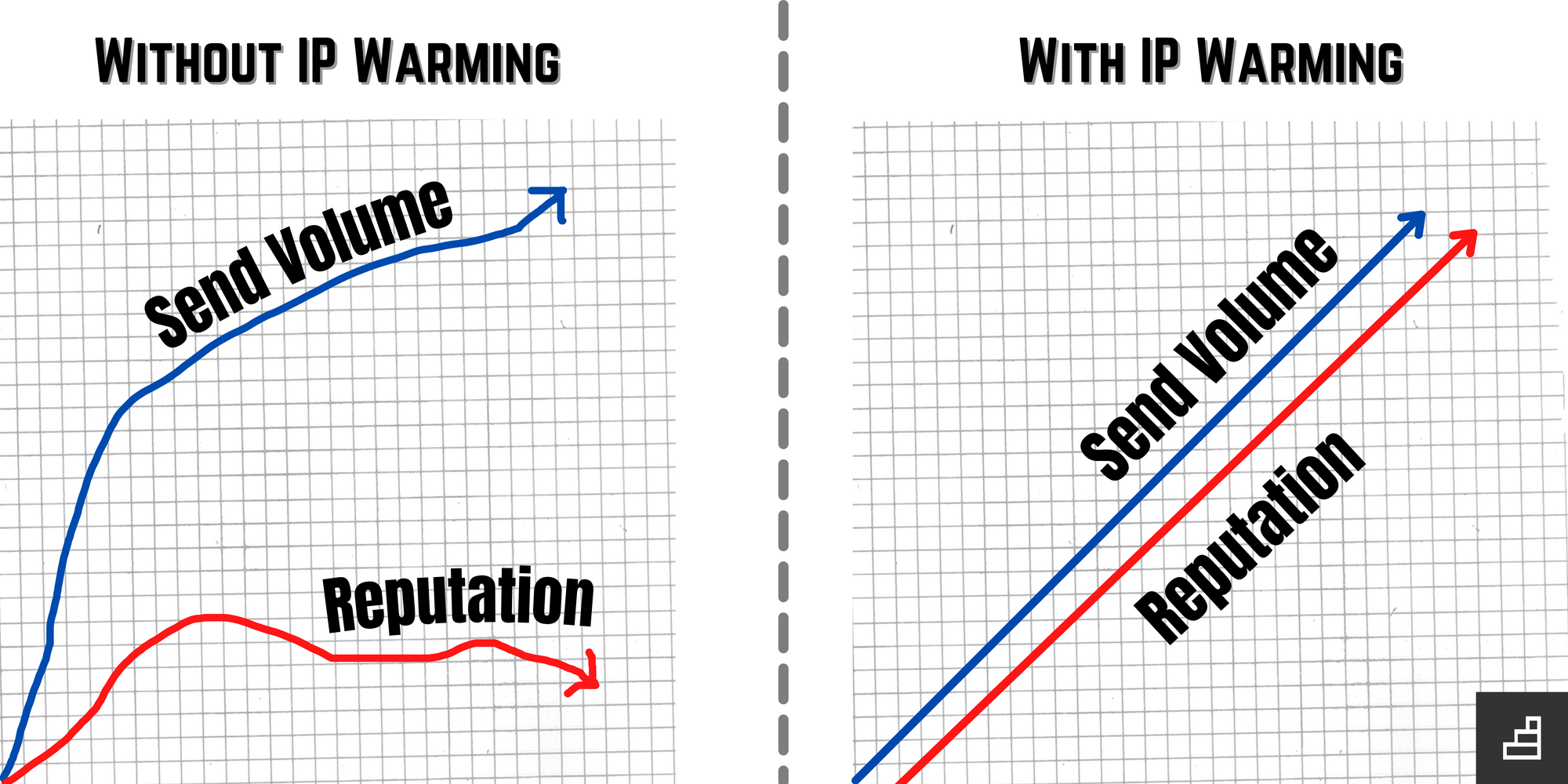
What is IP Warming?
IP Warming is crucial because it directly affects your email deliverability rates.
IP Warming is the process in which you gradually increase the total amount of emails sent from an IP address to grow and improve the sending reputation of that IP address. This process is specifically aimed at building and establishing a reputation with Internet Service Providers (ISPs), where the overall health of a domain and associated email addresses is based on the ISP reputation of the server.
Why is IP Warming Important?
To put it simply, IP Warming is crucial because it directly affects your email deliverability rates. You need to demonstrate consistent and positive engagement with your recipients, so Internet Service Providers recognize your domain as trustworthy. Without warming up your IP, your messages could end up in the recipient’s spam folders.
When you first set up a new IP address, you can’t immediately begin sending out as many emails as you plan to send from that account. If you start by sending out emails to all the clients on your rosters, Internet Service Providers will flag you as spam, and it can ruin your sender’s reputation. One of the main things Internet Service Providers keep an eye out for is the volume of sent emails because spammers send out mass emails to anyone and everyone.
The goal is to slowly but surely introduce your IPs to various Internet Service Providers, so they continuously recognize you as a reputable sender. The best way to scale your email efforts is to create a schedule that gradually increases the number of emails you send from your IP address until you reach the number of emails you hope to send in a day.
As you send out smaller streams of emails, Internet Service Providers will evaluate your content and the number of messages you’re sending before determining whether to put you in the recipient’s inbox or spam folder. The more positive interactions your IP address has with an Internet Service Provider, the more likely it is that your messages will go to the desired inbox.

How Does IP Warming Affect Email Deliverability?
Newly registered domains and IPs are inherently more prone to having outgoing mail blocked, deferred, or put on the recipient’s blocklist because of the IP address’s lack of an extensive sender history. Warming up your IP address is essential simply because it gives you a positive, baseline reputation out of the gate, so you have no issues when you begin sending the messages that matter.
Internet Service Providers use complex algorithms to decide whether your message gets to go to the recipient’s inbox. Some of the factors ISPs consider include spam trap hits, blocklist hits, email bounces, and subscriber engagement.
While warming your IP, it can be beneficial to have back-and-forth conversations through your inbox. An example would be having an ongoing email thread with a client or a colleague who works down the hall. The more engagement you have with recipients, the more legitimate your IP will seem to Internet Service Providers.
An additional way to build your IP’s reputation is through authentication. There are four ways to authenticate your account through configuring your IP in:
- The Sender Policy Framework (SPF)
- The Domain Keys Identified Mail (DKIM)
- Domain-Based Message Authentication, Reporting, and Conformance (DMARC)
- A custom domain
Each of these helps to establish your IP’s right to send messages to specific recipients.
How is IP Warming Related to Inbox Warming?
Inbox warming and IP warming are essentially one and the same. The primary difference between the two is that IP warming can be done across multiple email addresses, while inbox warming is specifically related to an individual inbox. Both activities will boost the reputation of your domain and inbox and keep you out of your audience’s spam folders.
If you’re using multiple IP addresses, it’s crucial to warm up each inbox individually. With your first IP address, you’re required to warm it up manually. But when you introduce another IP address on top of your current IP address, you can set up an automation to do the warming process for you through your user interface. This helps you streamline the process so you can focus on continuing to reach more inboxes.
No matter how many IP addresses you get set up for your business (and less is more here), once you’ve established its reputation, it’s essential to monitor the deliverability patterns continuously. If left unchecked, your IP address could end up losing its positive reputation because of spam identification, being placed on blocklists, or other factors. Of course, a tarnished IP reputation doesn’t mean that you have to get a different IP to replace it; it just means you have to start from scratch to warm it back up.
Newsletter
Join the newsletter to receive the latest updates in your inbox.





